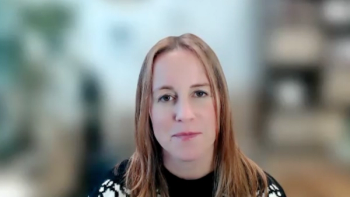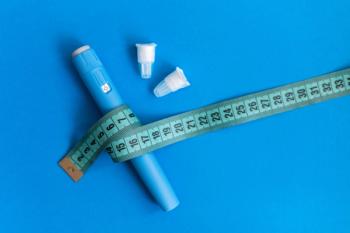
How Pharmacists Expand Rural Cancer Care Access: Jasmine Eugene, PharmD

Jasmine Eugene, PharmD, explains how pharmacists practicing at the top of their license improve rural oncology access and ease physician workload.
Pharmacists’ ability to provide supplemental care for patients living in rural areas without access to disease specialists or oncologists was a key point in providing equitable access at an Institute for Value-Based Medicine® event in New Orleans, Louisiana, on November 4.
Jasmine Eugene, PharmD, panelist and clinical pharmacy oncology specialist at Xavier University, explained that when pharmacists can practice at the top of their license, it reduces the burden on physician oncologists and helps patients access care in rural areas. In the state of Louisiana, the Well-Ahead Louisiana initiative, aimed at increasing access to health care, partnered with pharmacists to increase the use of collaborative drug therapy management to improve patient outcomes. Through this initiative, pharmacists may be able to “initiate, modify, or discontinue drug therapy, order and interpret laboratory tests, and advise patients on control of chronic conditions.”1
“Our provider status is something that we are striving towards, because if we become a provider, we are allowing more people who can provide care to patients,” Eugene said.
Amidst provider shortages, allowing pharmacists to manage patient medications and counseling without prior authorization from physicians can reduce their workload burden, Eugene said. Additionally, pharmacists, either through telemedicine or geographical location, help patients access equitable and specialized care, especially for cancer patients facing transportation and distance barriers to care.
“Sometimes some patients can't get to their physician as soon as possible,” she said. “Some people have pharmacies that are located in more rural areas compared to the actual clinic where they would see the oncologist.”
Despite the improvement a pharmacist’s presence can have on patient access and outcomes, there is still major policy reform needed so pharmacists in every state can practice at the top of their license.
“Having that provider status would allow patients to have access to a provider who can prescribe something for them when they may need something immediately,” Eugene said.
This transcript has been lightly edited. Captions are auto-generated.
Transcript
How can technology help sustain quality care delivery without compromising safety or care amidst physician and pharmacist shortages?
Really a couple of things. Again, the pharmacist adds that extra layer of monitoring, of course, but sometimes some patients can't get to their physician as soon as possible. Some people have pharmacies that are located in more rural areas compared to the actual clinic where they will see the oncologist.
The pharmacist can also provide counseling in terms of what they can do in terms of nausea and diarrhea, but then, even if they have different collaborative practice agreements, those different agreements can allow the pharmacist to change a dose, whether it's of the antiemetic or antidiarrheal. Some pharmacists can even change the chemotherapy dosing, and that can really help the patient as well.
Something that I am trying to implement in terms of more counseling and of medication reconciliation is making sure that we're having more touches to the patient by incorporating my students as well, because I find that giving them that experience really does catapult them into clinical pharmacy.
How do state-level regulatory differences impact pharmacists' ability to practice at the top of their license and support equitable cancer care?
Each state is different in terms of what a pharmacist can and cannot do, but as I mentioned earlier, collaborative practice agreements do allow pharmacists to practice at the top of their license. However, some states, again, are more progressive than others. I know in certain states that pharmacists can prescribe medications, but I do think that that can be a hindrance.
And of course, the provider access. Our provider status is something that we are striving towards, because if we become a provider, we are allowing more people who can provide care to patients—cancer patients, specifically—in more rural areas, like in Louisiana. I think that will help with equity, honestly, and it will help if oncologists make a diagnosis and make the regimen, the treatment; however, the pharmacist can monitor, reduce the dose, or increase the dose if needed, depending on what the patient may require, based on side effects and on toxicities. I think that would allow the patient to have more equitable care, because they may not be able to go and see an oncologist, which may be 3 or 4 hours away, because that's something that a lot of my patients do experience.
What policy or institutional changes do you believe could most effectively empower oncology pharmacists to expand their roles in patient education, care coordination, and equitable access?
Again, I think it goes back to the provider status situation. Of course, we all want to practice to the top of our license, or there is, like I mentioned, a push for pharmacists to gain that provider status to where we're not only, of course, dispensing and counseling medication, but we're prescribing that as well, and making sure patients are getting the correct medications and the correct dose.
But then also having access to another provider, because, as I mentioned earlier, Louisiana is a very rural state, so where there's maybe 1 pharmacy in 1 town, they may not have any providers in that area. Having that provider status would allow patients to have access to a provider who can prescribe something for them when they may need something immediately.
Reference
1. Hamilton AL, Darr M. Louisiana state policies prove problematic for pharmacist–physician collaboration. Prev Chronic Dis. 2020;17:200051. doi:10.5888/pcd17.200051
Newsletter
Stay ahead of policy, cost, and value—subscribe to AJMC for expert insights at the intersection of clinical care and health economics.













































